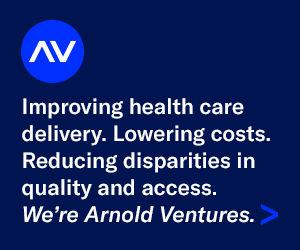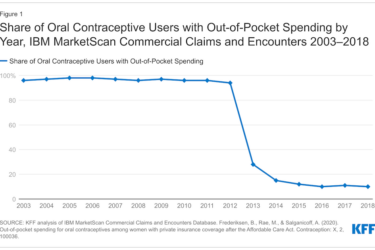
High-deductible health plans (HDHPs) discourage families from seeking primary care for their children, according to the American Association of Pediatricians. The problem is so severe that the federal government should consider limiting HDHPs to adults only, the AAP said in a policy statement published in Pediatrics.
“HDHPs discourage use of nonpreventive primary care and thus are at odds with most recommendations for improving the organization of health care, which focus on strengthening primary care,” the association said in its statement. Under the Affordable Care Act, preventive services are covered in full without charge.
This is the second time in as many months that a report has shown consumers skipping needed care because of the cost. Last month, we reported that out-of-pocket health care costs force one out of every eight privately insured Americans to skip necessary medical treatment, according to the survey from the AP-NORC Center, “Privately Insured in America: Opinions on Health Care Costs and Coverage.” The Robert Wood Johnson Foundation funded the survey. In a report earlier this month, “Too High a Price: Out-of-Pocket Health Care Costs in the United States,” the Commonwealth Fund expressed similar concerns.
In an article about the policy statement, Alyson Sulaski Wyckoff, associate editor of Pediatrics, quoted Budd Shenkin, M.D., the lead author of the AAP’s policy statement on HDHPs, saying parents are so concerned about the cost of care that they don’t bring in their children when they should. “They’re reluctant to come in, they seek more telephone care, they’re reluctant to complete referrals, and they’re reluctant to come back for appointments to follow up on an illness,” he said.
For children with chronic conditions, foregoing care can exacerbate illnesses, said Thomas F. Long, M.D., chair of the association’s Committee on Child Health Financing. “If it’s going to cost them out-of-pocket money, they may say, ‘Well, it’s just a cold, I don’t need to see the doctor.’ And ‘just a cold, turns into ‘just pneumonia,’” he added.
The problem of delaying necessary care is one Paul Levy addressed in his blog, Not Running a Hospital, about HDHPs. “Beyond the sad impact on individual families in any given year, I fear that the economic backlash of these policies will be a deferment of needed health care treatments and a resulting future bulge of cost increases. We’re playing Whac-A-Mole here,” he wrote.
For the Commonwealth Fund, researchers found that among privately insured consumers across all income groups, low- and moderate-income adults were most likely to skip the health care they need because of high out-of-pocket costs.
It’s no surprise that adults with the lowest incomes were most likely to skip needed care, the fund reported. Among consumers earning less than $22,890 annually, 46 percent cited at least one example of skipping needed health care because of copayments or coinsurance: 28 percent did not fill a prescription; 28 percent skipped a medical test or follow-up treatment; 30 percent had a medical problem but did not see a doctor; and 24 percent did not see a specialist when needed.
When deductibles are high relative to income, consumers tend to skip care as well, and low- and moderate-income adults had the most trouble, the report showed. Consumers whose deductibles represent 5 percent or more of their income cited at least one example of skipping needed health care because of their deductible: 29 percent skipped a medical test or follow-up treatment; 27 percent had a medical problem but did not go to the doctor; 23 percent skipped a preventive care test; and 22 percent did not see a specialist despite their physician’s advice.
For an article in Modern Healthcare, Bob Herman covered this topic well. He cited the case of a woman in Indiana who was searching for a health plan on HealthCare.gov. A single, 40-year-old nonsmoker, this woman could choose from 29 plans and 24 of them were considered HDHPs, he wrote.
Under IRS rules, (PDF) an HDHP in 2015 is defined as one that has an annual deductible of at least $1,300 for an individual and $2,600 for a family coverage and annual out-of-pocket costs that do not exceed $6,450 for individual or $12,900 for a family.
The Commonwealth Fund report showed that 13 percent of consumers with private health insurance had plans with a deductibles equivalent to 5 percent or more of their income; that figure includes 25 percent of adults with low incomes and about 20 percent of adults with moderate incomes ($11,490 to $45,960 a year for a single person).









